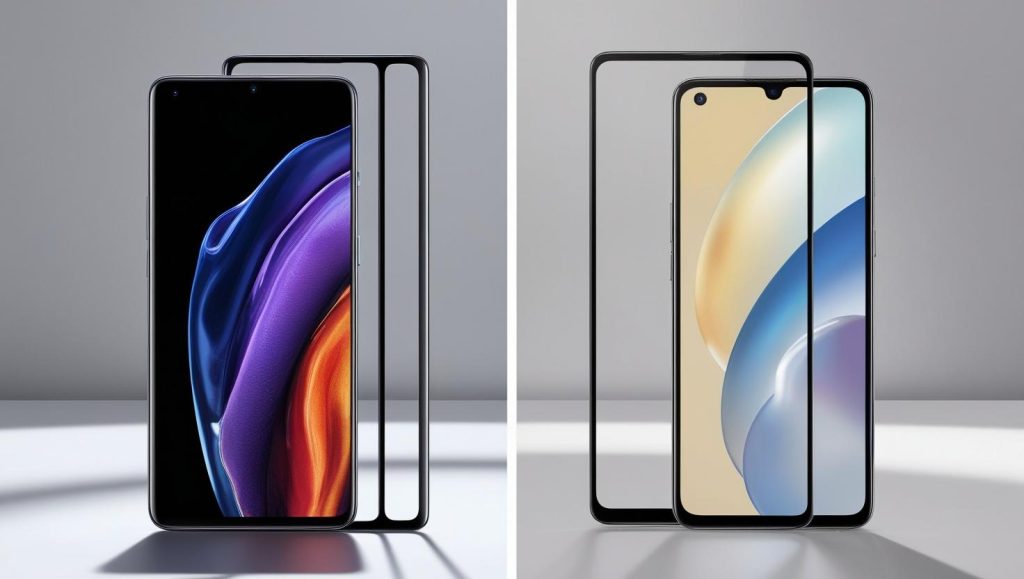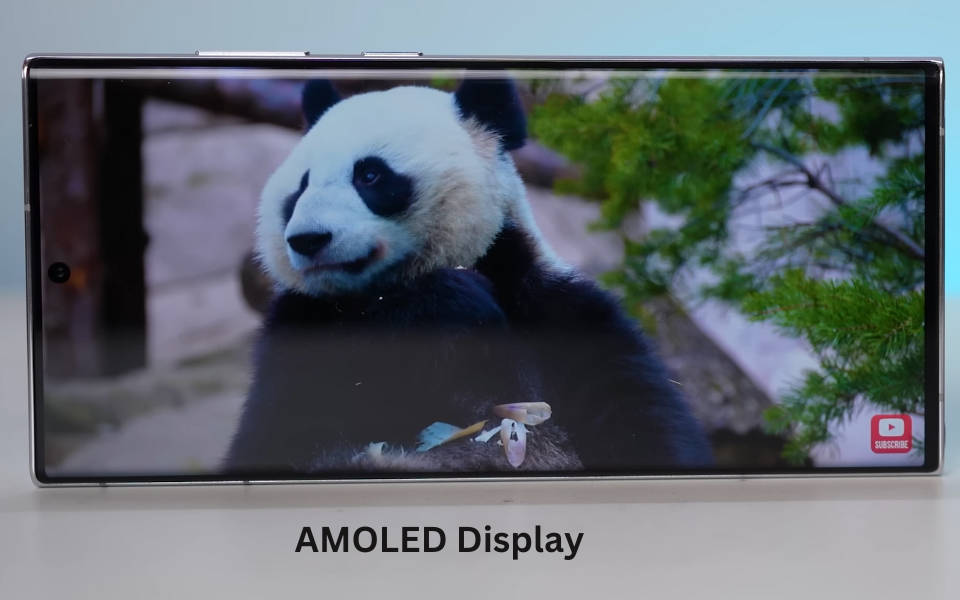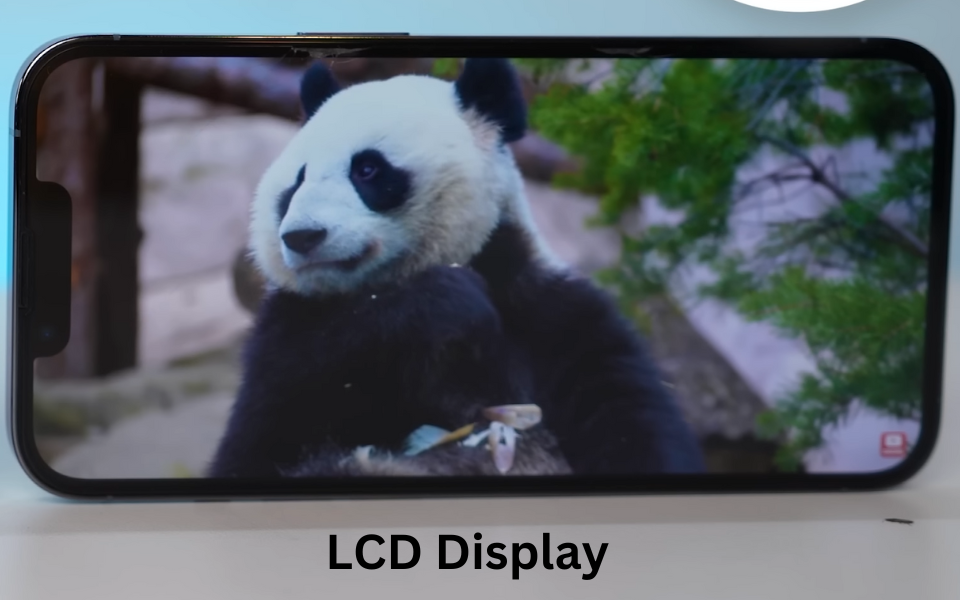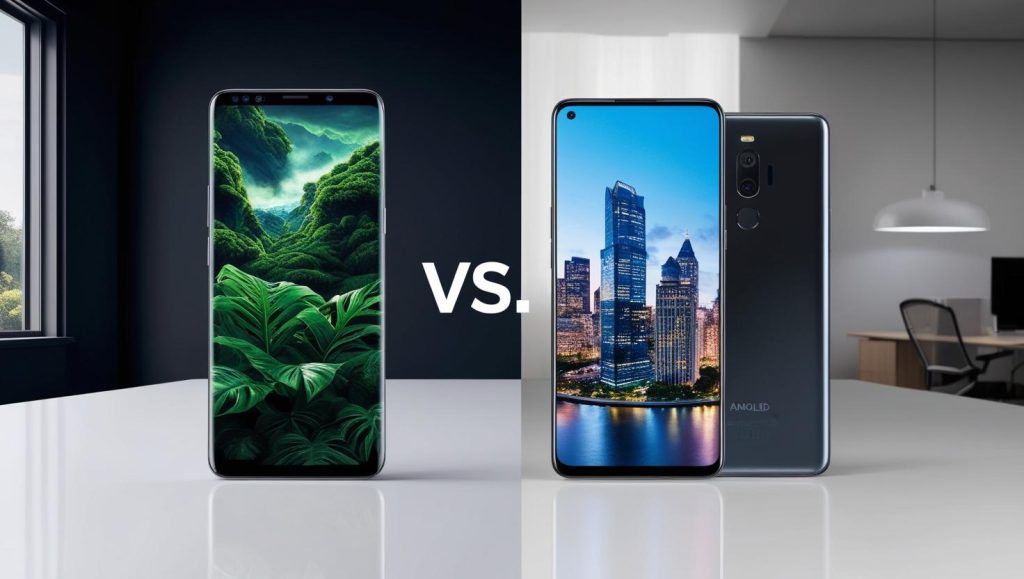Two major display options available in the market are AMOLED and LCD. The technology of Active Matrix Organic Light Emitting Diode serves as the acronym for AMOLED. The display technology produces bright colors and intense black pixels. LCD stands for Liquid Crystal Display which delivers images with both high brightness and crystal clarity.
Because AMOLED displays deliver both deep contrast along with flexible operation they find their use in advanced smartphones. LCD displays appear in mobile screens and computer monitors because they deliver steady performance at a more affordable price point. Users make their selection between these displays based on their personal requirements and taste.
Understanding Display Technologies: AMOLED vs LCD

The smartphone industry relies mainly on two display technologies which are AMOLED and LCD. The technology AMOLED or Active Matrix Organic Light Emitting Diode displays vibrant colors with deep black pixels. Each pixel in AMOLED displays functions independently to produce light which enhances brightness and saves energy. Premium smartphone users prefer this technology because it provides thin flexible screens.
LCD displays are preferred due to their reliable performance and their ability to produce bright high-quality images. The backlight illumination method in LCD screens produces a uniform brightness pattern across the display. The combination of affordability and durability makes these displays suitable for smartphones of mid-range and budget categories.
DisplayMate analyzed screens to establish that AMOLED demonstrates superior color precision but LCD excels when viewing under direct sunlight. People choose AMOLED displays above other display types because they deliver an outstanding visual experience particularly during media sessions and gaming activities. The selection between AMOLED and LCD screens depends on personal requirements together with financial constraints.
Comparing the Picture Quality: AMOLED vs LCD
Smartphone users experience two different viewing experiences through AMOLED and LCD technologies. AMOLED displays produce deep black levels and produce vibrant colors in their displays. The individual pixels of this display system produce their own light for accurate color representation and sharp contrast control. The visual experience becomes more immersive because of AMOLED displays particularly in dim environments.

LCD screens require the use of a backlight because the backlight creates issues with black levels. AMOLED displays maintain their image quality through bright and consistent screen performance. LCD displays function optimally in direct sunlight by delivering clear pictures which avoid reflections.

The tests conducted by DisplayMate showed that AMOLED screens deliver superior color accuracy together with more vibrant colors than LCD screens. The display technology of AMOLED proves excellent for watching media content and playing games. LCD screens receive praise due to their uniform brightness distribution and long-lasting nature which makes them appropriate for regular usage.
The selection between AMOLED and LCD depends solely on individual taste. People who value vivid and active visuals should choose AMOLED screens. Users who require consistent brightness levels together with outdoor visibility should choose LCD over AMOLED.
Some popular smartphones: AMOLED and LCD
When it comes to smartphones, both AMOLED and LCD displays have their champions.
For AMOLED and LCD, popular models include:
| Phone of AMOLED display | Phone of LCD display |
| Samsung Galaxy S23 Ultra | OnePlus Nord CE 3 Lite 5G |
| Google Pixel 7 Pro | POCO M6 Pro |
| OnePlus 11 | Realme 12 5G |
| Xiaomi 13 Pro | POCO X3 Pro |
| Vivo X90 Pro | LG G7 Plus ThinQ |
The display selection depends on individual preferences together with financial constraints since each type provides unique advantages. Visual quality reaches its peak with AMOLED displays but LCD delivers stable performance together with durable performance.
Exploring the Durability Factor: AMOLED vs LCD
AMOLED and LCD displays show different levels of durability through their separate characteristics. AMOLED screens provide superior thinness and flexibility than LCD displays. The flexible design enables AMOLED screens to resist small collisions effectively. Static images will create permanent marks on screens because AMOLED displays show increased susceptibility to burn-in damage.
LCD displays maintain rigid structures which enables them to resist damage from drops and tolerate rough handling events. The screens experience reduced risk of developing burn-in problems. The thickness of LCDs creates a vulnerability leading to increased risk of cracking under serious impact.
DisplayMate conducted research which showed smartphone screen durability depends both on glass selection and device construction quality. The manufacturing industry implements Gorilla Glass as a component to improve both screen durability and minimize scratches.
The durability features of AMOLED and LCD displays show different advantages and disadvantages when compared together. A person’s needs and their planned device usage determine which type of screen they should choose. Users who value flexible design combined with bright display elements should choose AMOLED displays yet users who desire durability will likely select LCD screens.
Deciding the Winner: AMOLED vs LCD for Your Needs

What matters most to users determines their decision between AMOLED and LCD smartphone displays. AMOLED displays show their colors with high vibrancy and produce deep black tones. Such displays provide superior performance for video viewing and gaming entertainment. AMOLED screens reduce battery consumption because they deactivate pixels to show black.
The image quality of LCD displays remains high and visible under bright sunlight conditions. The display technology displays better durability alongside improved resistance against burn-in damage. The choice of LCD displays in budget smartphones makes them suitable for customers focusing on price.
The assessments conducted by DisplayMate show AMOLED screens deliver better accuracy for colors yet LCD screens maintain steady illumination levels. Personal preferences together with budget constraints determine the final selection between these display types. Your decision should focus on either vivid visual performance or product longevity depending on your priorities.
Final Word
AMOLED technology combines effectively with LCD technology for different display needs. AMOLED technology delivers deep black colors and bright vibrancy which appeals to people who watch media. The LCD display produces bright images that maintain consistency which makes it suitable for outdoor usage. Your choice will depend on whether you prefer vivid display visuals or display longevity.
Source: Click Here










